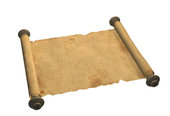Jehovah's Witnesses Straight Talk - Forum/Blog
Mark 1:3 The voice of one crying in the wilderness, "Make ready the way of the Lord! Make his paths straight!'"
Top
Topic Search Straight Talk
-
Bibical Research ArticalsHistory, Ancient, Commentary, and much more ...
-
History of Religion, Free e-books
-
The Sign of The Age/Era/Race
-
Truth About a Painful Subject
-
No longer Taught by JW's
-
Help In Understanding God's love
-
Find Out Who?
-
Commentary Roman Eight
-
Growth For New Creation
-
How can Knowledge be Bad?
-
Commentary
-
Free e-book; Daniel a Slave of Christ Jesus
-
Free e-book
-
Copy and Paste our URL
-
-
No RSS feeds have been linked to this section.
-
June 27 - JWsStraightTalk
Taking The Rights of Another Adult! -
June 26 - JWsStraightTalk
The Final Prophecy! -
June 24 - JWsStraightTalk
Hanging Your Hope Upon The Wobbly Peg of Peace! -
June 23 - JWsStraightTalk
What Happens When we Understand No One Gets Away with a Thing? - June 23 - JWsStraightTalk on THE BLANKET PARDON PARADOX!
The specified account does not have any social accounts configured. Use the link below to manage your social links.
Add Links »
Add Links »
Website Vistors Click on Icon For Complete Report
MAIN TALK UNDERSTANDING GOD THE SCRIPTURES
-
Talks and pdf files
-
Look down the list for Main Talk: Understanding God and your bible
-
Number One Subject on Jwwstragighttalk: Look down the page
-
Jwsstraighttalk reply in audio
-
Copyright & copy; 2011, JWsStraightTalk. All rights reserved. Information on jwsstraightalk can be shared with friends, used in teachings, but is not allowed to be sold for profit.


 Post Your Reply
Post Your Reply
December 06, 2019
“All rivers flow into the sea, for the sea is the lowest point, all things flow into the humble of heart for that is God's lowest point for us.”
Zechariah 9:9 Rejoice greatly, daughter of Zion! Shout, daughter of Jerusalem! Behold, your king comes to you! He is righteous, and having salvation; lowly, and riding on a donkey, even on a colt, the foal of a donkey.
Luke 1:52 He has put down princes from their thrones. And has exalted the lowly.
Matthew 11:29 Take my yoke upon you, and learn from me, for I am gentle and lowly in heart; and you will find rest for your souls.
Proverbs 16:19 It is better to be of a lowly spirit with the poor, than to divide the plunder with the proud.
Proverbs 29:23 A man's pride brings him low, but one of lowly spirit gains honor.
Facts: When talking about the size of stars, it’s important to first take a look at our own Sun for a sense of scale. Our familiar star is a mighty 1.4 million km across (870,000 miles). That’s such a huge number that it’s hard to get a sense of scale. Speaking of which, the Sun also accounts for 99.9% of all the matter in our Solar System. In fact, you could fit one million planet Earths inside the Sun.
Another thing worth considering is the fact that our Sun is pretty small, as stars go. As a G-type main-sequence star (specifically, a G2V star), which is commonly known as a yellow dwarf, its on the smaller end of the size chart (see above). While it is certainly larger than the most common type of star – M-type, or Red Dwarfs – it is itself dwarfed (no pun!) by the likes of blue giants and other spectral classes.
In terms of large stars, Betelgeuse serves as a good (and popular) example. Located in the shoulder of Orion, this familiar red supergiant has a radius of 950-1200 times the size of the Sun, and would engulf the orbit of Jupiter if placed in our Solar System. In fact, whenever we want to put our Sun’s size into perspective, we often use Betelgeuse to do it (see below)! Facts by Universe Today